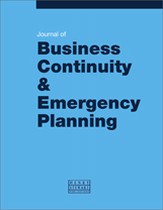How to communicate flood risks effectively
Abstract
Communicating flood risk is a complex endeavour with multiple perspectives, approaches and components as each flood-risk situation is unique and has numerous variables: the geographic proximity of involved parties, the type and extent of exposure, potential risks, possible actions and others. While business continuity and emergency response teams understand their technical and operational role in responding to flood hazards, many continue to struggle with their risk communication capabilities. This situation risks leaving key audiences in a precarious environment when better understanding of this communication effort could prevent ineffective and potentially damaging media and public responses. There is therefore a need, as well as an opportunity, to communicate about flood risk in a way that informs without frightening, educates without provoking alarm, and moves people to act. The seven principles described in this paper offer some first steps in ensuring that communication strategies are proven, evidence-based, and can motivate policy action and change on a public and private level. Their application will result in an informed, involved and collaborative public.
The full article is available to subscribers to the journal.
Author's Biography
Tim L. Tinker is a Senior Associate in Strategic Communications at Booz Allen Hamilton Inc. He is also Co-Director of Booz Allen’s recently created Center of Excellence for Risk and Crisis Communication. As an internationally recognised expert in risk and crisis communications, Dr Tinker works in both public and private sectors such as homeland security, emergency preparedness, public health, energy and environment, to help clients anticipate, prepare and practise science-based and system-wide risk and crisis communication.
Gerald E. Galloway, Jr. is a Glenn L. Martin Institute Professor of Engineering and Affiliate Professor of Public Policy at the University of Maryland. He is also Visiting Scholar at the US Army Corps of Engineers Institute of Water Resources. During a 38-year military career, he served in the USA and overseas, retiring in 1995 as a brigadier general and Dean of Academics at the US Military Academy. He was 2007 President of the American Water Resources Association. He is a graduate of the Military Academy and holds master’s degrees from the universities of Princeton and Pennsylvania State and the US Army Command and General Staff College, as well as a doctorate in geography from the University of North Carolina at Chapel Hill. Dr Galloway is a registered professional engineer and a member of the National Academy of Engineering.
Citation
Tinker, Tim L. and Galloway, Jr., Gerald E. (2009, May 1). How to communicate flood risks effectively. In the Journal of Business Continuity & Emergency Planning, Volume 3, Issue 3. https://doi.org/10.69554/EGLT1205.Publications LLP
